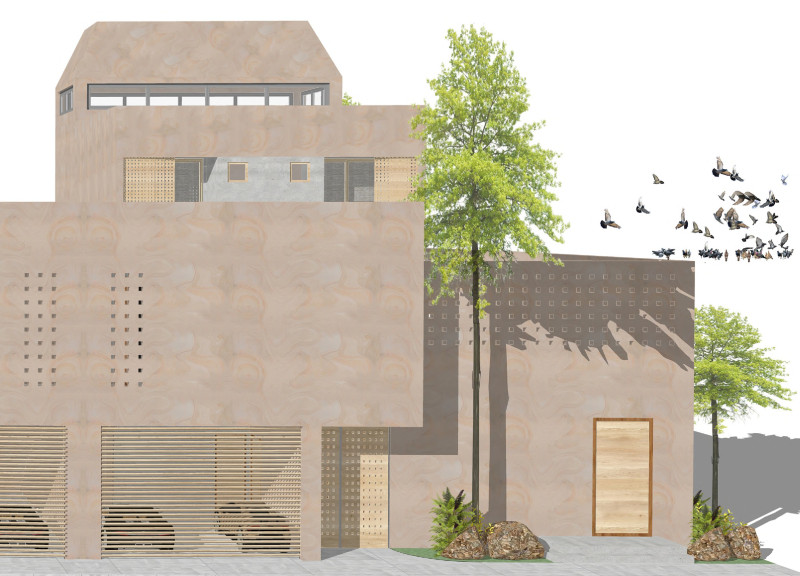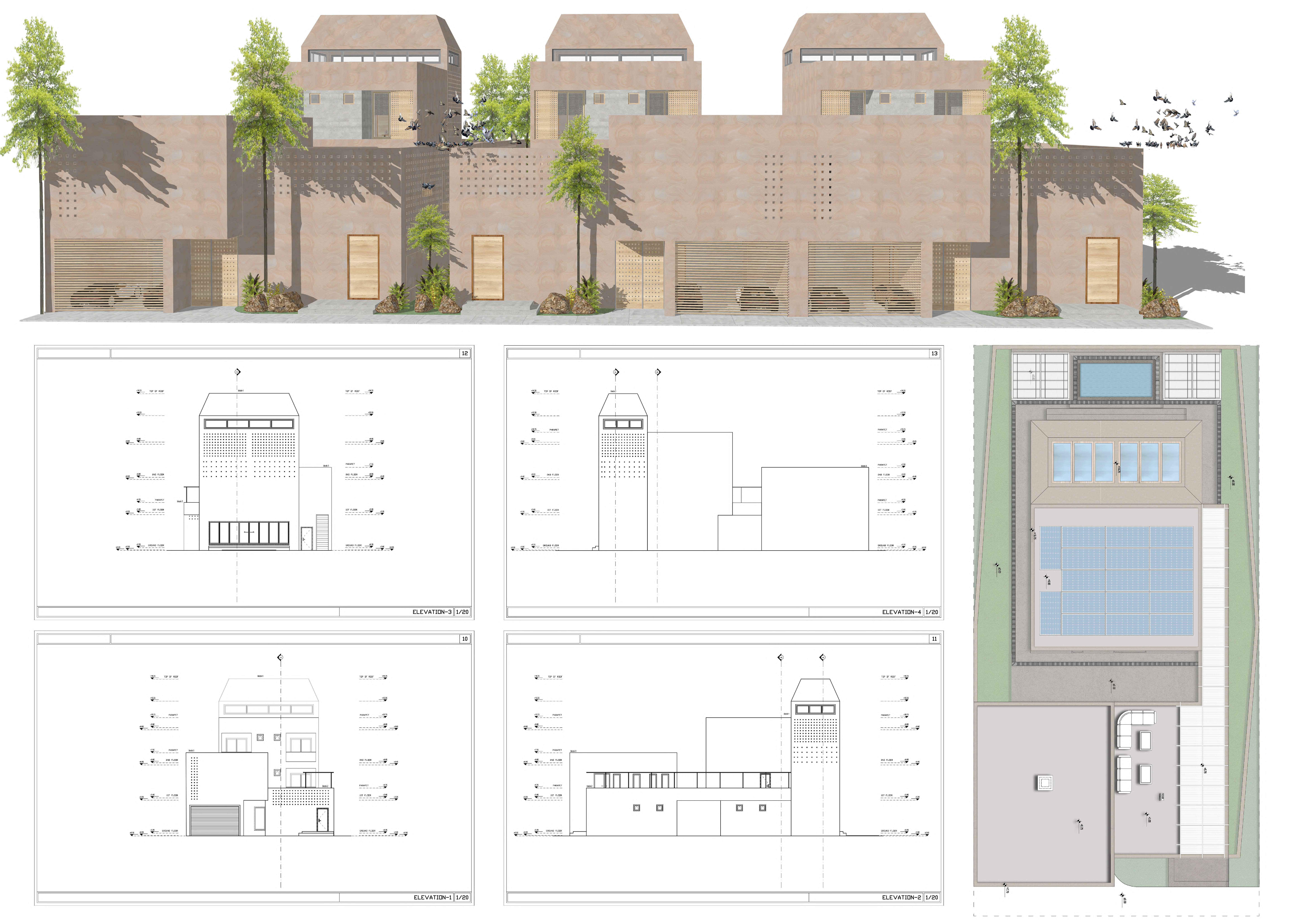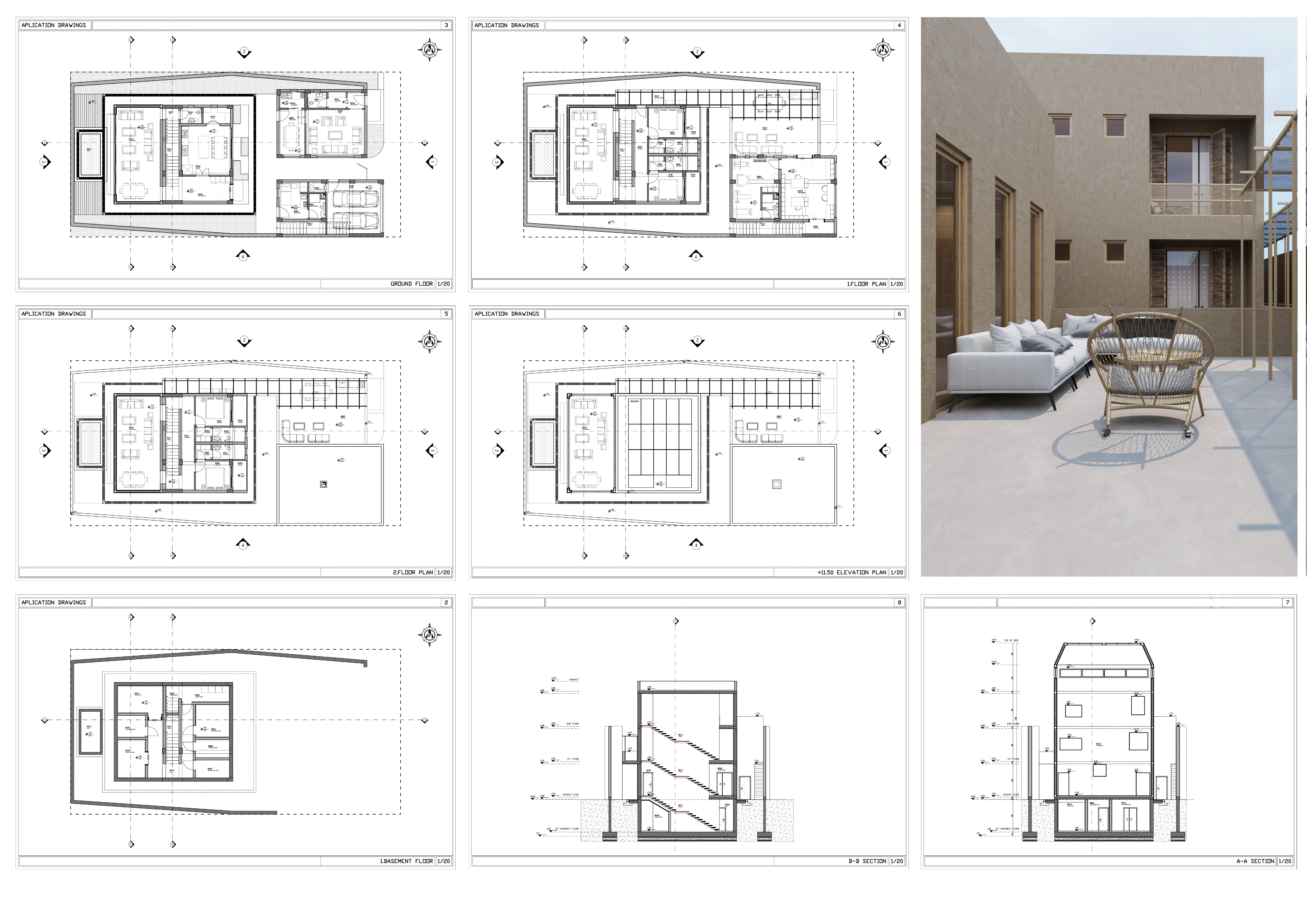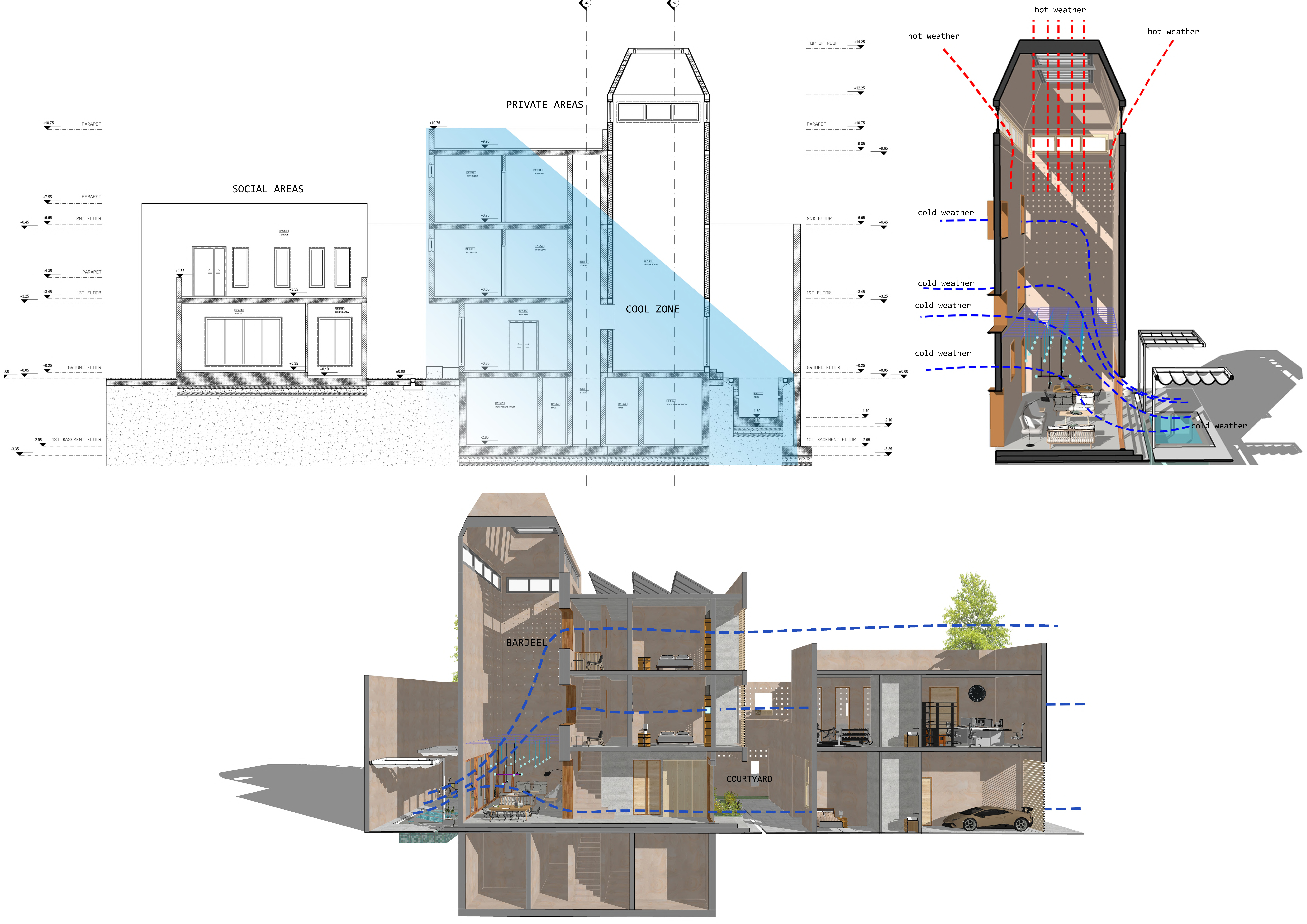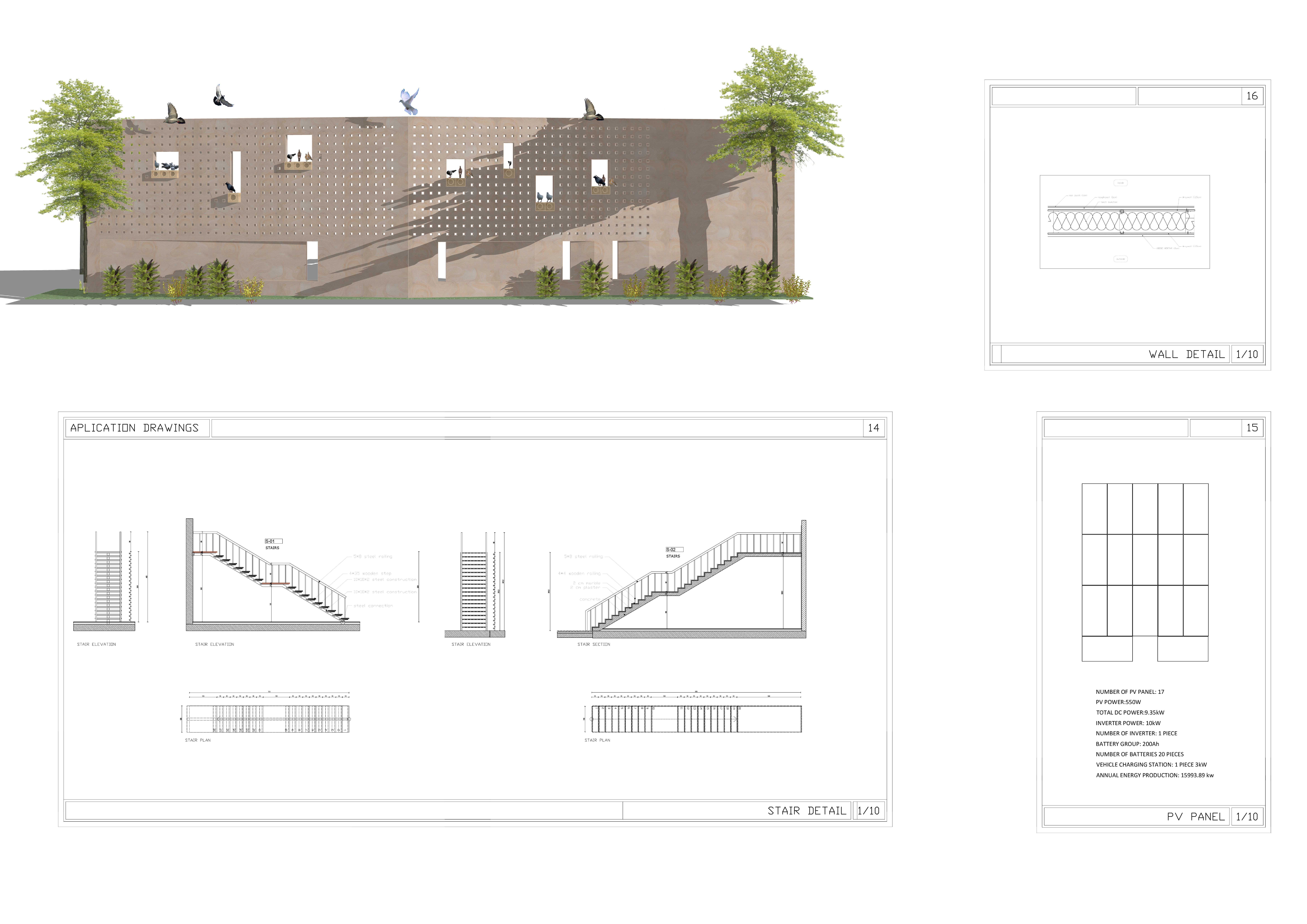5 key facts about this project
### Overview
The residential structure is situated in an unspecified geographical context marked by varying climatic conditions and cultural nuances. The design aims to integrate modern architectural sensibilities with traditional influences, resulting in a building that emphasizes both functionality and aesthetic appeal. The architectural approach reflects a commitment to sustainability and environmental responsiveness while promoting a seamless interaction between indoor and outdoor spaces.
### Architectural Form and Spatial Strategy
The design features multiple distinct volumes, each serving specific functions, and is characterized by a pronounced upper mass that enhances the building's profile. Overhanging canopies and angled roofs are employed as climate-responsive elements, providing shade and protection from direct sunlight. The configuration prioritizes open-plan layouts in communal areas while maintaining distinct private spaces. Central courtyards facilitate natural airflow and cooling, enhancing comfort throughout the structure. Additionally, varied window sizes and placements promote cross-ventilation and create dynamic light patterns within the interior.
### Materiality and Sustainability
The choice of materials is integral to the building's character and environmental performance. Mudbrick forms the external walls, offering thermal mass and connecting with traditional construction methods, while concrete provides structural integrity. Wood is utilized for window frames and shutters, contributing warmth to the aesthetic, and expansive glass windows invite natural light and establish visual links with the external environment. Photovoltaic panels are integrated into the roof design to support renewable energy efforts. Landscaping incorporates native flora, which enhances biodiversity and minimizes water usage, further advancing sustainable practices present in the project. The overall design incorporates natural ventilation strategies and innovative water management systems to ensure a responsible approach to resource usage.


